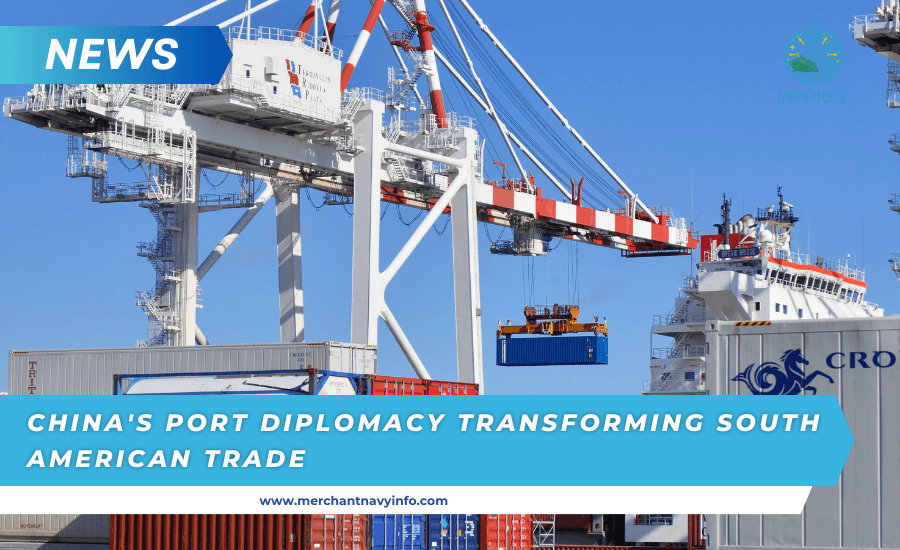
How China’s port diplomacy is redrawing the South American trade map?
In Peru, South America’s copper giant, the incoming White House under Donald Trump will find itself on the losing side of a trade war with China, part of a larger power realignment around a resource-rich region in Washington’s backyard.
Peru, the world’s second-largest copper exporter, will host APEC leaders this week, with Chinese President Xi Jinping expected to attend and inaugurate a major new port China is building in the country. Outgoing U.S. President Joe Biden is also on the guest list.
Peru reflects a broader challenge facing the White House in South America, where China’s influence is rapidly expanding thanks to its voracious appetite for the region’s main exports: corn, copper, soybeans, beef and lithium, a mineral used in batteries.
That has made Beijing the most favored trading partner from Brazil to Chile and Argentina, undermining Washington’s regional political influence, a trend that expanded under Trump’s “America First” policies, turned inward during his first administration and is reappearing under Biden.
“The strategic value is that this is America’s backyard,” said Li Xing, a professor at the Guangdong Institute for International Strategy, adding that it helps counter the U.S. presence in the Indo-Pacific and offset the risk of trade war.
“China can’t start building military bases there because they are too sensitive and will make the conflict with the U.S. too obvious … so it’s making progress in economic relations first.”
Peru presents a dramatic turnaround. According to the United Nations Commodity Trade Statistics Database (UN Comtrade), China’s trade lead over the U.S. widened to $16.3 billion last year, a sharp contrast to a decade ago, when Washington dominated. At the same time, investment in industries ranging from energy to mining has followed.
In 2015, China’s trade with Peru surpassed that of the United States, and the gap widened under the Trump administration from 2017 to 2021 and widened again under Biden.
“China is moving aggressively into the region, is learning quickly, and is ready to stay for the long term,” said Eric Farnsworth, a former State Department official who now works for the Council of the Americas and the Americas Society.
“Unless the United States prioritizes regional economic policy in a new and more effective way, the region will continue to tilt toward Chinese interests.”
The U.S. Embassy in Lima did not respond to a request for comment. Washington officials have repeatedly publicly warned that Chinese investment in the region is conditional and say the United States is a more reliable partner.
Singapore Latin America
The beacon of change is a huge new port 80 kilometers (50 miles) north of Chankay Lima. China’s state-owned COSCO Shipping Corp. is building the port, which promises to shorten the sea route to Asia for Peruvian and Brazilian goods.
The Chinese-controlled port, planned for unveiled during Xi Jinping’s visit to Peru, has raised U.S. concerns about regional security but, more importantly, will strengthen the region’s trade highway to China.
“We will open direct routes to Asia, especially to Chinese ports, which will reduce the time by 10, 15, 20 days, depending on the route,” Peruvian Transport and Communications Minister Raul Perez Reyes told Reuters at the port.
It will compete with the Mexican port of Manzanillo and eventually the California port of Long Beach, he added.
“Our goal is to be the Singapore of Latin America.”
The Pacific Coast port has brought other investments to boost connectivity, especially for Brazilian soybean producers, who are keen to reduce shipping costs and travel time to Asia and avoid traveling north through the Panama Canal. The Peruvian government is moving forward with a rail project that could cost $10 billion.
That could lead to more Brazilian soybeans being shipped overland to Peru and then to China. Brazil’s trade with the world’s second-largest economy has grown sharply in recent years.
Most local officials and diplomats, however, take a cautious approach. They say China and the United States are important partners. But they acknowledge privately that China’s focus on Latin America is more tangible.
“Peru is open to doing business with all countries,” said a senior Peruvian official who asked not to be named. “But what China is doing is focusing its investments on Latin America and Africa,” regions with the resources it needs, the official added.
Peru hopes to sign a deal with China during the APEC forum to modernize a 2009 free trade agreement that focuses on intellectual property, e-commerce and customs procedures, he added.
‘Signs of enthusiasm’
Clemente Baena Soares, Brazil’s ambassador to Lima, said the Chancay port would significantly boost Brazil’s soybean exports.
Signs of enthusiasm
Clemente Baena Soares, Brazil’s ambassador to Lima, said the Chancay port would be a big boost for Brazilian soybean producers, cutting travel time to Asia by nearly half.
He asked Peru to ease bureaucratic procedures for Brazilian transport companies, such as load limits on roads linking the two countries.
Jose Tan, president of the Peruvian Chinese Chamber of Commerce, said China was more active in South America than any other country, helping to boost trade and investment ties between the two countries.
“China is sending the clearest signals of enthusiasm in the region,” Tan said. He is the head of a partnership that includes major copper mines such as MMG Ltd’s Las Bambas and Aluminium Corp’s Chinalco.
Mario De Las Casas, director of corporate affairs at COSCO Shipping Group, said Peru’s shift toward China was not political but an openness to investors from around the world. The trend was purely commercial, with less investment from the United States.
“For the United States to come in and invest, they haven’t done that for many years,” he said, adding that Peru was well-positioned to benefit from any global trade tensions. “There is no good or evil here, there are only benefits here.”









